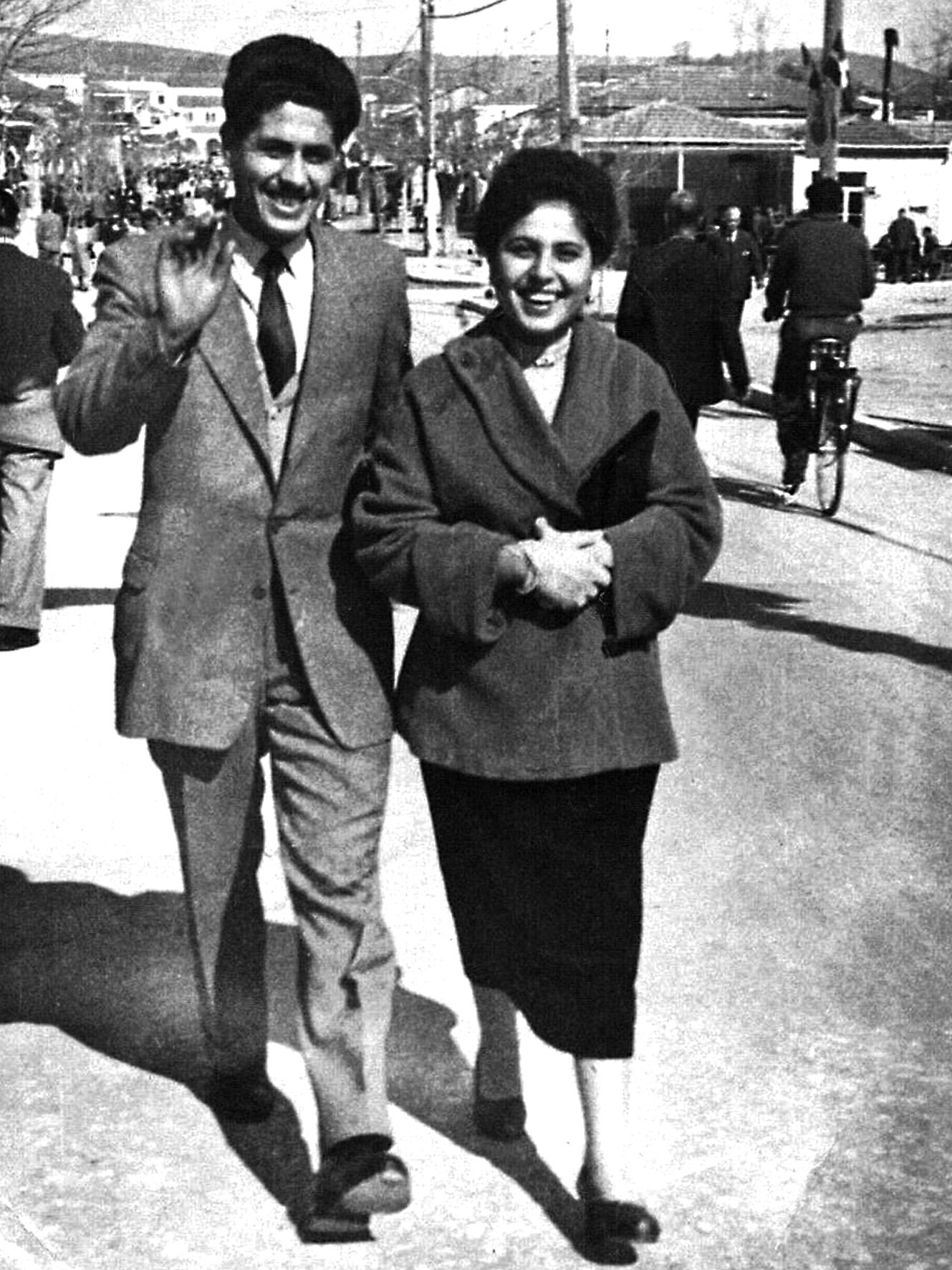Fardy
This moniker was commonly used for streets in Smyrna, the hometown of many Nea Ionia residents, but it also accurately describes the settlement’s grid plan. To an outsider, it might seem a bit excessive, but a more discerning visitor who has walked through the narrow streets around Fardy will immediately understand why the nickname is apt.
Ever since Nea Ionia’s establishment, Fardy has been the area’s main thoroughfare. It was the road the bus used to enter Volos, the road the workers used to get to work, and the area’s main commercial road. Nea Ionia’s first houses, known as ‘Tetragona’ [‘The Square Houses’], as well as the settlement’s square and church, were built on both sides of this road.
The road might have changed since 1922, but it has retained its multiple uses and central role in the everyday life of the people of Nea Ionia. For them, Fardy was akin to the city’s boardwalk, a site for strolling and socializing. Smaller and larger groups of boys and girls would walk up and down the street on Saturday evenings, teasing and flirting, and often these chance encounters would lead to relationships.
Nikolaos Spanakis, born in Nea Ionia in 1928 to Asia Minor refugee parents, says:
‘I met [Toula] here on Fardy. After the football match, we would stroll here on Fardy, we didn’t go to the boardwalk. The three of us were footballers, we would stroll up and down Fardy, and so would she and her friends and that’s where we met. We liked each other from the start. I would say, “I’ll go to Fardy”, or “I’ll go to the water fountain”. So, she would take her water pitcher and go to the water fountain too [laughter], I would meet her there and we would talk. There were also some music halls in the area, the Lazaridis music hall for example, with live music and singers. That’s another place where we would meet.’
Alongside the happy memories and descriptions of fun moments on Fardy and its stores, there are also the testimonies from the hardest periods of the city’s history.
Michalis Fatsis, born in Nea Ionia in 1930 to Asia Minor refugee parents, says:
‘A German soldier was walking around our neighbourhood early in the morning. I was young, I didn’t know what was going on. There was a Jewish man who had a stall on Fardy and sold cigarettes and stuff. His family lived on our block. The soldier would walk around asking for them by name. I was 12-13 years old, I had no idea. We should have warned them, we should have told them to run away. But we didn’t. He found them and they were loaded on a German truck. Three kids, one 6 or 8 years old, another 12 or 13 and a ten-year-old girl. They took the mother, too. People went to Fardy, found the father and told him to leave. They said, “They’ve arrested your family, go away!”. The poor man answered, “What’s the point? They’ve got my wife and kids. What’s the point in me escaping alone?”. So he surrendered and they took them to Auschwitz and burned them all. They’re gone. Damn all the SS bastards. And now we have people praising the Nazis and we expect things to get better! Things will never get better and that’s that!’
The road has maintained its character, its commercial use, and even the height of its buildings remains relatively low. Although a few tall apartment buildings have been erected on Fardy, the surrounding grid plan has remained largely intact. In addition, a large number of refugee houses are still standing on the streets around Fardy, many of which are not fully functional according to modern housing standards. As a result, the area continues to attract waves of migrants who cannot afford housing in more expensive parts of the city.
Almost 100 years since the opening of the road, its history is still being written and rewritten, as the people who walk along it leave behind successive layers of their footsteps and their life histories. However, the simple and apt nickname given to it by the area’s first settlers remains, a rare case of continuity in the study of urban roads.
The audio story and the accompanying text include excerpts from interviews with Nikolaos Spanakis (a law office worker born in Nea Ionia in 1928) and Michalis Fatsis (a dockworker born in Nea Ionia in 1930), conducted by Maria Karastergiou, 30/5/2013. Audiovisual Archive of Testimonies, Department of History, Archaeology and Social Anthropology (IAKA), University of Thessaly.
Objects

